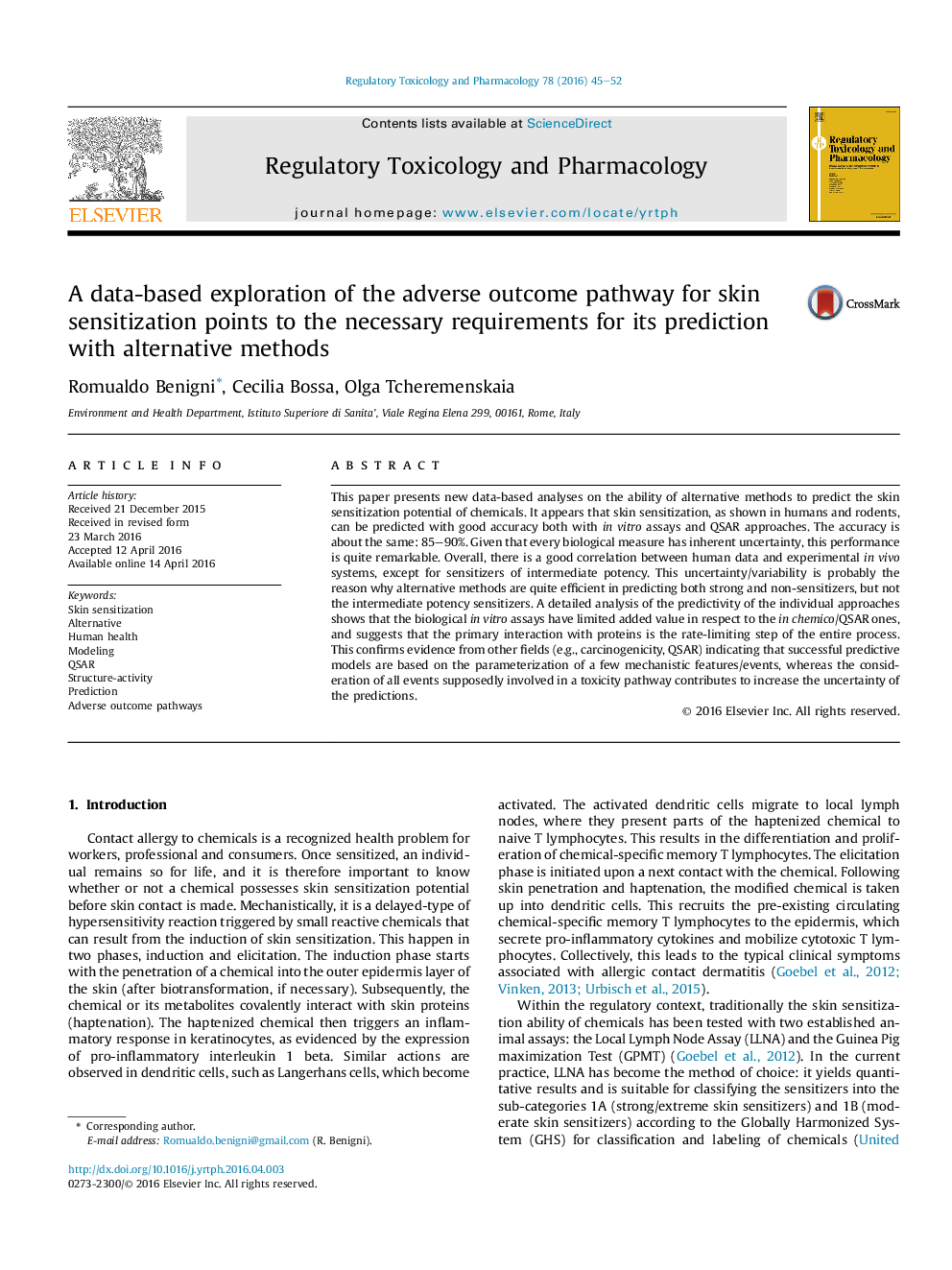| کد مقاله | کد نشریه | سال انتشار | مقاله انگلیسی | نسخه تمام متن |
|---|---|---|---|---|
| 2592297 | 1562125 | 2016 | 8 صفحه PDF | دانلود رایگان |
• A detailed reanalysis of published data on skin sensitization is presented.
• Both in vitro and QSAR approaches can provide satisfactory predictions.
• Exploration and modeling of haptenation may ensure further progress.
This paper presents new data-based analyses on the ability of alternative methods to predict the skin sensitization potential of chemicals. It appears that skin sensitization, as shown in humans and rodents, can be predicted with good accuracy both with in vitro assays and QSAR approaches. The accuracy is about the same: 85–90%. Given that every biological measure has inherent uncertainty, this performance is quite remarkable. Overall, there is a good correlation between human data and experimental in vivo systems, except for sensitizers of intermediate potency. This uncertainty/variability is probably the reason why alternative methods are quite efficient in predicting both strong and non-sensitizers, but not the intermediate potency sensitizers. A detailed analysis of the predictivity of the individual approaches shows that the biological in vitro assays have limited added value in respect to the in chemico/QSAR ones, and suggests that the primary interaction with proteins is the rate-limiting step of the entire process. This confirms evidence from other fields (e.g., carcinogenicity, QSAR) indicating that successful predictive models are based on the parameterization of a few mechanistic features/events, whereas the consideration of all events supposedly involved in a toxicity pathway contributes to increase the uncertainty of the predictions.
Journal: Regulatory Toxicology and Pharmacology - Volume 78, July 2016, Pages 45–52
